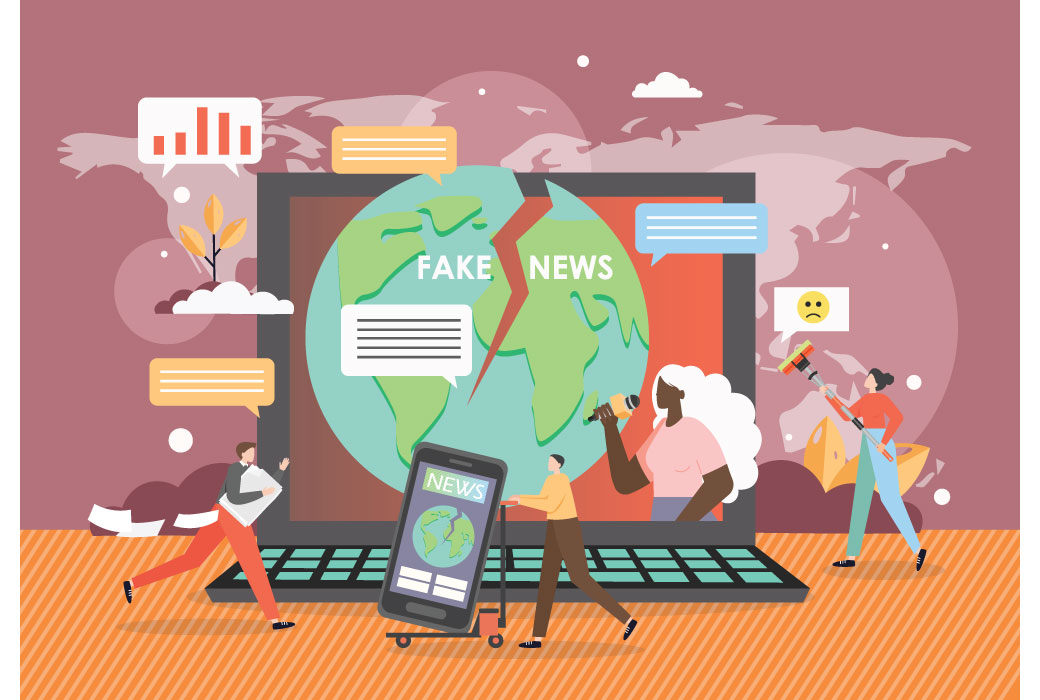In today’s age of advanced technology and connectedness, disinformation has become a product with a market, competing for your knowledge and expertise no matter who you are or where you work.
Disinformation affects agriculture’s operations all across the value chain, Cami Ryan, PhD, Social Sciences Lead of Regulatory Scientific Affairs for Bayer, recently spoke about the differences between misinformation and disinformation, understanding the disinformation landscape, and how it affects the business environment.
“We found that just because science says that something is safe or beneficial, doesn’t mean that the public agrees,” Ms. Ryan said. “Bridging the divide in this industry helps us to continue to build a world that has plenty of safe and diverse food, and it’s produced in ways that we can all trust. Misinformation and disinformation are nothing new to agriculture, but how disinformation is driven, incentivized, and shared today certainly has.”
Misinformation is referred to as inaccurate or incomplete information that misleads through honest mistakes, negligence, or unconscious bias.
Disinformation is qualitatively different, in that it is a product of a carefully planned and technically sophisticated deceit process with an expected outcome such as shares, likes, or financial gain.
Disinformation can be shared as misinformation by someone with a lack of knowledge or through negligence, and while this is most likely an unintentional act, it still perpetuates the spreading of disinformation.
In the same way, misinformation may also be weaponized into disinformation by influencers with agendas or motives, making it increasingly important to verify and seek out credible information sources.
The increasing popularity of social media has created opportunities and challenges for science, business, and societies as a whole, with attention becoming the limiting factor of seeking out information. Ms. Ryan suggests that people only have so many hours in a day and there are countless pieces of media that are competing for their (your) attention. In this way, the media may not tell people what to think, but it certainly shapes the way that people think through unconscious bias and selective reporting.
According to Ms Ryan, humans tend to seek out information that confirms our biases, and we are more apt to ignore information that does not align with our opinions and beliefs in favour of information that supports them. She explained that information overload has left no time or incentive for critical thinking, it is much easier to tweet and share status updates because they tend to confirm our biases. This can create echo-chambers where competing information is disregarded and can potentially lead to irrational action and conspiracy theories.
In 2005, less than 5% of adults in the US used some form of social media, this number has grown to over 65% in 2015, and in 2021 it is expected that over 50% of humans living on this planet will have access to some form of digital social network.
Why should the agriculture industry care?
“Whether it’s about greenhouse gases and livestock production, or GMOs, or COVID-19 vaccine issues, these issues are symptoms of deeper problems that we have.” Said Ms. Ryan, “We have gaps in information because science is always outpacing society, and disinformation has just made all of these issues worse.”
Ms Ryan cautions that it is important to be aware of disinformation because it has become a product for trade that competes with expert knowledge. This disinformation divides us and has social and economic impacts from public health effects to shelved products, technologies, and lost innovations. People increasingly tend to view themselves as experts, and disinformation vendors take advantage of data voids by providing readily discoverable information that is not necessarily scientific or accurate. For this reason, communication is necessary to retain the discoverability of accurate information.
Disinformation can achieve economies of scale in a way that science cannot. She concluded her presentation by urging the agriculture industry to reduce the spread of disinformation by sharing credible, scientific sources and engaging in productive communication and discussion.
Related Articles
- CAAR's Year in Preview CAAR board and staff share with members a look at what their association’s priorities are for 2021. As the geopolitical environment evolves, the need for an association representing the voice of the agriculture indu...
- CAAR's Year in Preview CAAR board and staff share with members a look at what their association’s priorities are for 2021. As the geopolitical environment evolves, the need for an association representing the voice of the agriculture in...
- CAAR's Year in Review The ag industry showed strength and unity in the face of the many challenges presented in 2020 as COVID-19 drastically changed how ag retailers conducted business. As an essential service, businesses in all areas of ...
- Opportunities with Ag Technology Autonomous equipment and precision application systems have the potential to disrupt the application of the traditional inputs, which some say will ultimately benefit retailers.David Parker, executive vice president ...
- CAAR Conference: Educate. Engage. Evolve Our virtual event is an interactive, online experience, providing ag retailers with an opportunity to educate themselves through informative sessions and group discussions, engage with exhibitors and other attendees ...

Join the discussion...
You must be logged in as a CAAR member to comment.
Report
My comments